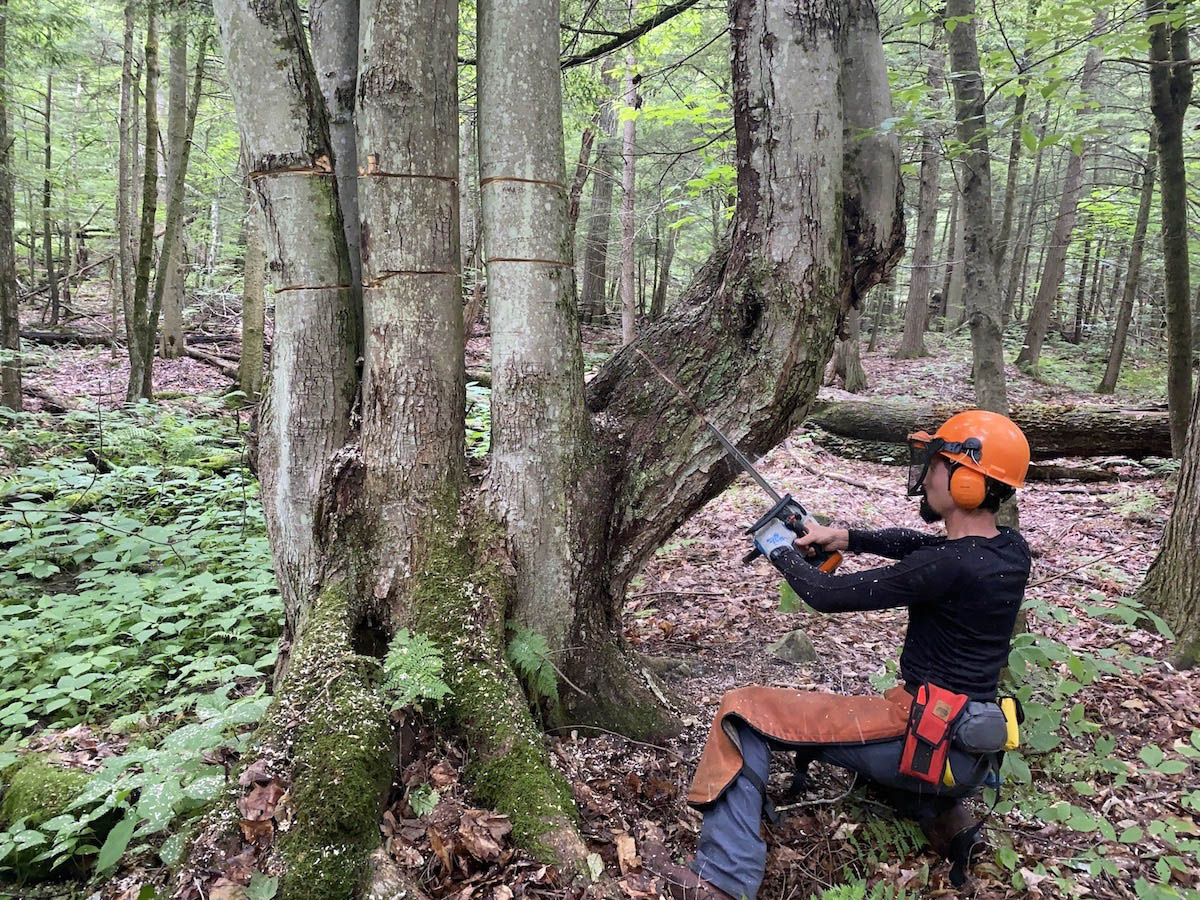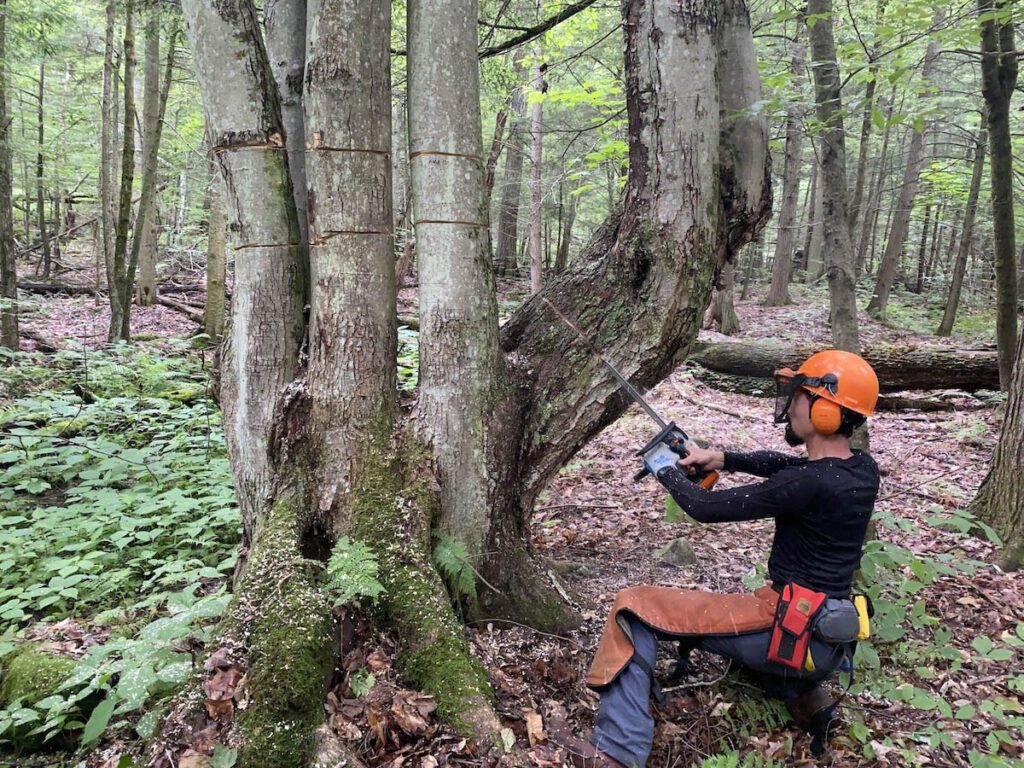
In the conventional forestry world, foresters use the term “Timber Stand Improvement,” or TSI, as a catch-all for various forest management activities aimed, as the name suggests, at cultivating high-quality timber products. To meet this aim, TSI employs vegetation management practices like crop tree release and pre-commercial thinning. In this use-based, human-centered paradigm, forest landowners are either preparing for a timber harvest or carrying one out.
In these times of rapidly changing climate, people are increasingly aware of the need to tend forests so they are better able to nurture things other than timber products—like high-quality water, species diversity, carbon sequestration and storage, and flood and drought resilience. What’s called for in these times is an Earth-centered approach to interacting with forests, using practices that acknowledge and attend to ecological health. The term “timber stand improvement” doesn’t capture that.
We propose a different term for forest management practices—one that captures and encourages an Earth-centered focus—“Community-based Forest Renewal” or CFR.
CFR practices start with the community—both forest and human. They’re inspired by Aldo Leopold’s recognition of health as the capacity of the land for self-renewal, and conservation as our effort to understand and protect that capacity. Eric Sorenson and Liz Thompson’s important book, Wetland, Woodland, Wildland, identifies the attributes and particular assemblage of species present in the natural communities of Vermont, most of which are forested. CFR practices aim to nurture the well-being and integrity of these forest communities.

Vermont Family Forests’ CFR practices empower the human community, guiding forest landowners to carry out conservation practices in ways that are effective, safe, and satisfying. Take tree girdling, for example. It’s a practice that anyone who has taken a Game of Logging training course (which VFF offers twice a year) can do. GOL-trained landowners can also use their chainsaw training to reduce erosion on old, abandoned, steep forest access roads by directionally felling trees across them to slow the flow of runoff and increase infiltration.
CFR practices focus first on forest health, with the side-benefit of improved timber production. Through the CFR practice of girdling trees, landowners enhance large dead wood, feed mycorrhizae, maintain carbon storage, and provide habitat for wildlife. When these girdled snags fall to the forest floor, they provide new habitat to a different slate of species, store nutrients and moisture, and offer shelter to regenerating seedlings.
Girdling also encourages the growth of vigorous nearby trees, which might later be cut for timber. It’s the same treatment, whether done as part of TSI or CFR. But when we consider it a CFR practice, we signal and nurture a different mind-set. Words matter. They’re the way we articulate meanings and define relationships. The TSI model is crop-based; CFR is ecosystem-based. CFR is about lending a hand to an ecosystem, tapping the natural ability of healthy forests to renew themselves. Through our Organic Forest Ecosystem Conservation Checklist, Vermont Family Forests has identified Optimal Conservation Practices (OCPs). CFR is the application of those practices.
CFR practices enhance native tree species richness, wildlife habitat connectivity, carbon storage, and flood resilience. They do all of this without the use of synthetic pesticides like glyphosate, through practices that promote intact forest canopies and minimize soil disruption so forests are less susceptible to invasives.
CFR practices mimic how northern forests regenerate themselves. They promote old-growth and nurture complexity. They encourage the growth of high-quality, wind-firm, healthy, dominant trees that withstand windstorms. These trees ultimately could have economic value, and timber production can benefit from this approach, but it’s not what you lead with.
Words matter. Community-based Forest Renewal signals an intention to collaborate with the forest community, and that seems to us like a very good place to start.
Please contact VFF if you’re interested in talking with one of our conservation foresters about carrying out CFR practices in your forest.





